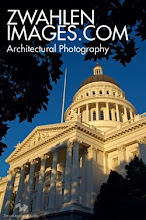
In a recent overview report filed by the cities Infill Coordinator, between the years of 2005 and 2008, infill development in Sacramento had become a much larger share of total developments in the city but it still lags behind greenfield development. The increase in infill development in the City does not appear to stem from dramatic increases in demand or the number of infill developers, but rather an increasingly constrained supply of greenfield land. This has boosted the percentage of infill from 19% in the 2001-2004 period to 43% in 2005-2008 time period.
With growing numbers of local infill developers, increasing demand and a limited land supply, the percentage of infill development is expected to continue to grow. However, infill developers face a number of significant barriers including obsolete infrastructure, high construction costs and land prices, design issues, communityresistance, and a complicated regulatory environment.

The City has made a lot of changes to improve the regulatory environment for infill developers. Changes include the new streamlined MATRIX review process; clearer design guidelines; zoning changes to allow higher density and promote flexibility; fee deferrals and waivers for infill; grant funding for amenities in infill areas; and financial assistance to projects. In addition, the City has begun proactive efforts, such as the Shovel-Ready Sites Program, to invest in infill areas in order to leverage additional private sector investment.
Efforts to promote infill development in the City and the region have increased due to the benefits of this type of development. By placing jobs, housing and services near existing businesses and residents rather than at the City’s edge, the City can help reduce vehicle trips, improve air quality and reduce the long-term cost of having to build and maintain new roads, pipes, and facilities.

Unlike the residential market where a constrained land supply drove an increase in infill activity over the last four years, industrial, office, and retail development was influenced by different factors. Such factors include proximity to consumers, market demand, and ease of access. While non-residential development increased almost 70% in infill areas compared to only 28% in greenfield areas, a breakdown by type reveals a more complex picture.
Between 2005 and 2008, the level of industrial and especially retail development was higher in greenfield areas compared to infill areas. In infill areas, only office development was higher, but that was a result of significant high-rise office projects in Downtown such as the U.S. Bank Tower rather than a widespread increase in infill areas.
Since the 2030 General Plan proposes that two-thirds of all future growth will be infill, the City will be looking at new ways to promote infill development to meet future demand. The risk that the City faces is that if it is not able to increase the supply of infill development, people and jobs may locate in greenfield areas or elsewhere in the region. If more people and employers locate away from urbanized infill areas, our region will see less open space, increased congestion and worsening air quality.
All info above was provided by the City of Sacramento Summer 2009 Infill Report











